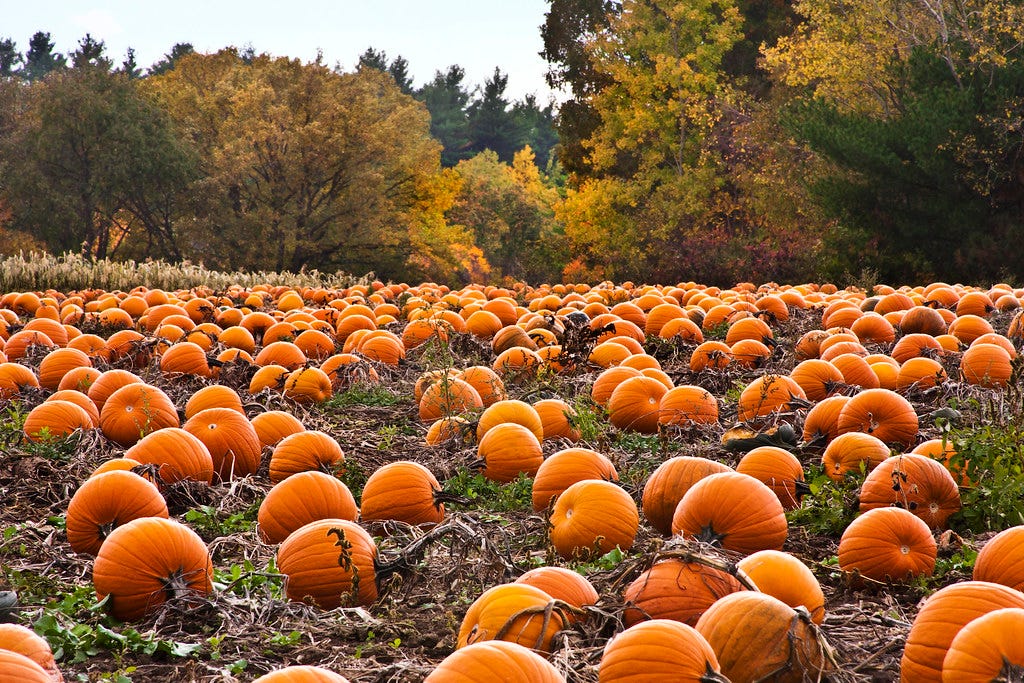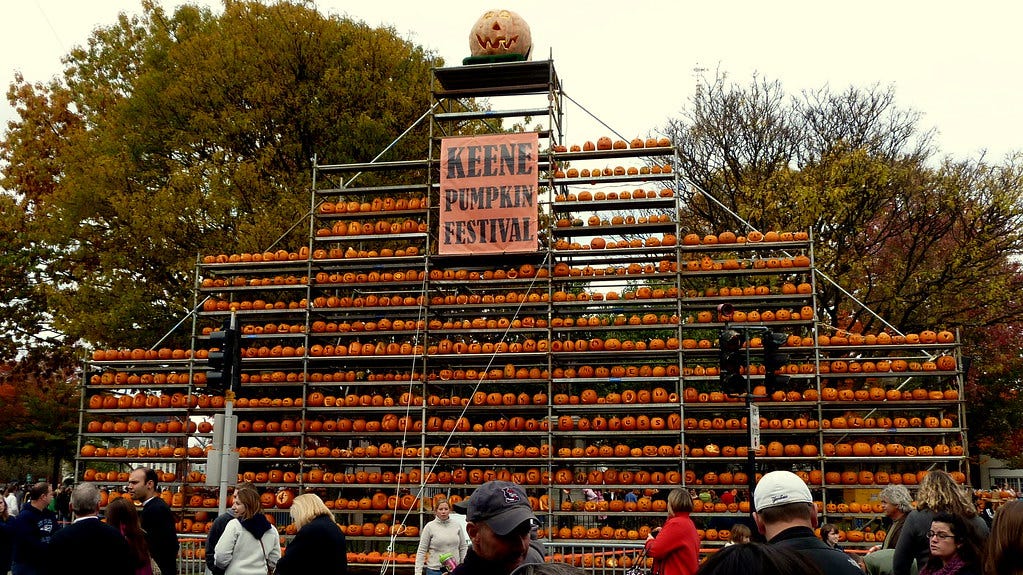Pumpkins are a peculiar breed of vegetable—big and brightly-colored orbs of winter squash that are hefty enough to fracture your toe, and chock full of squishy, stringy innards and seeds that can improve hair growth, sleep quality, sperm quantity, you name it. Cultivated as early as 7000 B.C. and native to continental North America, pumpkins made appearances in stews and pies long before the 19th Century, when a bunch of supertstitious Englishmen began hollowing them out, carving grotesque faces into the pumpkin rind, and placing a candle inside. These early Jack O’Lanterns were planted on doorsteps and windowsills on Halloween, to ward off evil spirits. As is the case with many traditions with roots in folk paranoia, the Jack O’Lantern, and by extension the pumpkin itself, became a beloved icon—a symbol of autumnal beauty.
At least, that’s what the pumpkin became for the little city of Keene, New Hampshire. Tucked away from the madness of the White Mountains and the Lakes Region, in the southwest corner of NH, Keene is best known for two institutions. There’s Keene State College, with a student body of around 3,000, and then you have the Keene Pumpkin Festival. It started as an October competition among Granite State towns—to amass the most Jack O’Lanterns in one place—and Keene clobbered the competition. Local businesses and residents carved tens of thousands of pumpkins and consolidated most of them in the city’s downtown shopping district. There were literal pyramids of these glowing pumpkins, which drew seasonal visitors to Keene and imbued the city with a sense of possibility. The event, originally called the New Hampshie Pumpkin Festival, became the Keene Pumpkin Festival. As this grand showcase morphed into a landmark happening, it added live music, street food, and a climatic fireworks show.
And then, one afternoon in 2014, an extremely strange thing happened.



